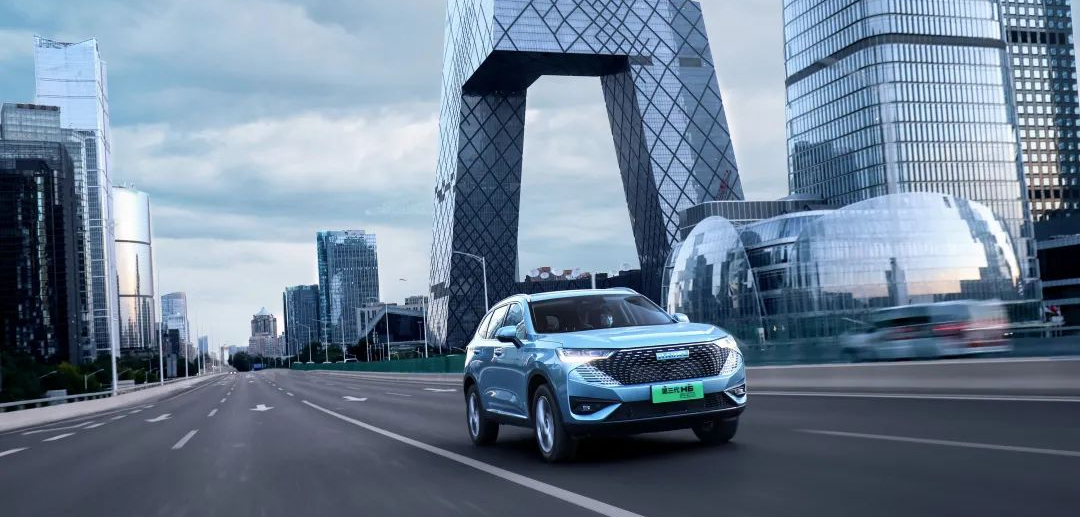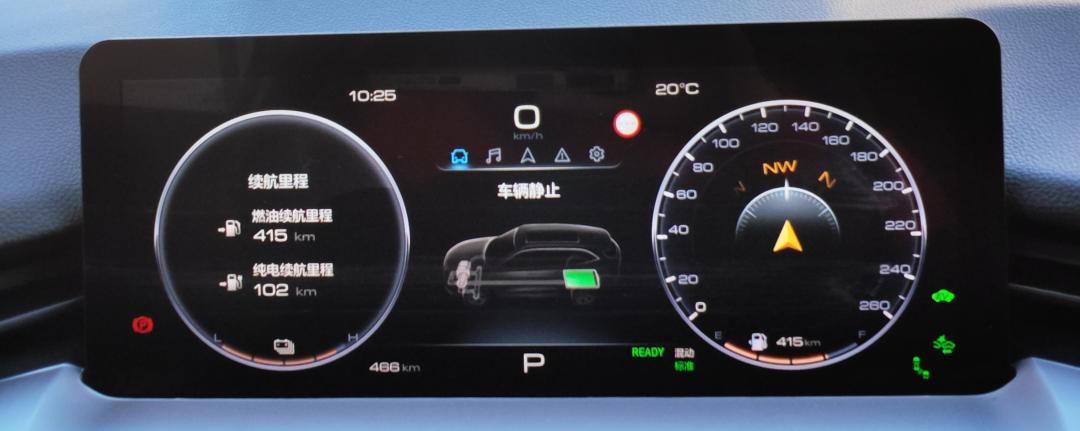Author: French Fries Fish
There are too many successful cases that tell us the importance of choosing the right time.
When applying this theoretical template to the macro demand in the Chinese auto market, objective data tells us that SUVs are the most favored car model by Chinese people in the second decade of the 21st century.
Coincidentally, Haval began to focus on SUVs in 2010. As a result, the sales of Haval SUVs, to be more precise, the Haval H6, began to dominate the market: 80,000 units sold in a single month is a record it holds, it has been the sales champion for 100 months, and it is the choice of 4 million users.
Will this be the next key choice window when the fuel price exceeds 8 yuan/L?
Two months ago, Haval answered this question with its new energy strategy, new logo, and the new H6 super hybrid DHT twin stars.
Two months later, as I sat in the driver’s seat of the third-generation Haval H6 DHT-PHEV, I began to think.

A Lemon Hybrid Multiple-Choice Question
The hybrid gene of the new car comes from the Lemon Hybrid. I believe that our long-time readers and viewers who have been following us are familiar with the Lemon Hybrid, and here’s a brief introduction.
Lemon Hybrid was previously more commonly used in high-end products under the Great Wall brand. The launch of the Haval H6 Hybrid twin stars can be seen as the release of Great Wall’s Lemon Hybrid technology.
 In terms of technical capabilities, the two-speed DHT of Lemon Hybrid DHT is regarded as the top tier in hybrid systems. According to Haval CTO Lu Wenbin, the core of Lemon Hybrid DHT is to “guarantee the power while ensuring fuel efficiency,” which can cover different levels of vehicles such as A, B, and C. Of course, different architectures and batteries will be used for different models.
In terms of technical capabilities, the two-speed DHT of Lemon Hybrid DHT is regarded as the top tier in hybrid systems. According to Haval CTO Lu Wenbin, the core of Lemon Hybrid DHT is to “guarantee the power while ensuring fuel efficiency,” which can cover different levels of vehicles such as A, B, and C. Of course, different architectures and batteries will be used for different models.
Regarding the power configuration of this new car, the third-generation H6 DHT-PHEV uses a 1.5T four-cylinder hybrid-specific engine, with a maximum power of 113 kW and a maximum torque of 233 N·m. Paired with a two-speed dual-motor hybrid gearbox, the maximum power of the electric motor is 130 kW, and the maximum torque is 300 N·m.
After comprehensive consideration of the power from gasoline and electricity, the total power of 240 kW and maximum torque of 530 N·m is comparable to that of a 3.0T engine, which is very powerful for a compact SUV.
As for the key to the word “hybrid,” Lemon DHT offers six power modes to explore the secret of fuel economy.
Understanding the Power Strategy# Hafer H6 PHEV Fuel Consumption Test Drive
Hafer H6 PHEV claimed its fuel consumption as 5.6 liters per hundred kilometers when the car was fully charged. To test this claim, we started the test drive with pure electric mode and turned off the battery hold function, which meant the car would run on pure electric mode as long as possible until battery depletion.
The test car was equipped with a 19-degree battery pack with a pure electric range of 110 kilometers. At the beginning of the test, the car had 92% battery power, and the displayed range was 102 kilometers for pure electric mode and 415 kilometers for gasoline mode.
The test drive took place during the morning rush hour on the fifth ring road. The Hafer H6 PHEV in electric mode had a responsive accelerator pedal and rapid motor response, which demonstrated significant advantages in preventing cut-ins from other drivers. The only thing that was not satisfactory was the noise generated by the electric motor, which was a bit loud.
After entering the highway from the fifth ring road, I thought the engine would kick in quickly. However, to my surprise, even at a speed of 100 km/h, the car was still running on pure electric mode confidently and steadily without any engine intervention, thanks to the abundant electric power.
After trying out the highway, I found out that the strategy of the car was as follows:
As long as there was power in the battery, the car would always run on pure electric mode unless the accelerator pedal was fully depressed. When the pedal was fully depressed, the engine started, which meant that the car was running at full load.
Therefore, when you drive the Hafer H6 PHEV smoothly, you can use it as a pure electric car, even on the highway.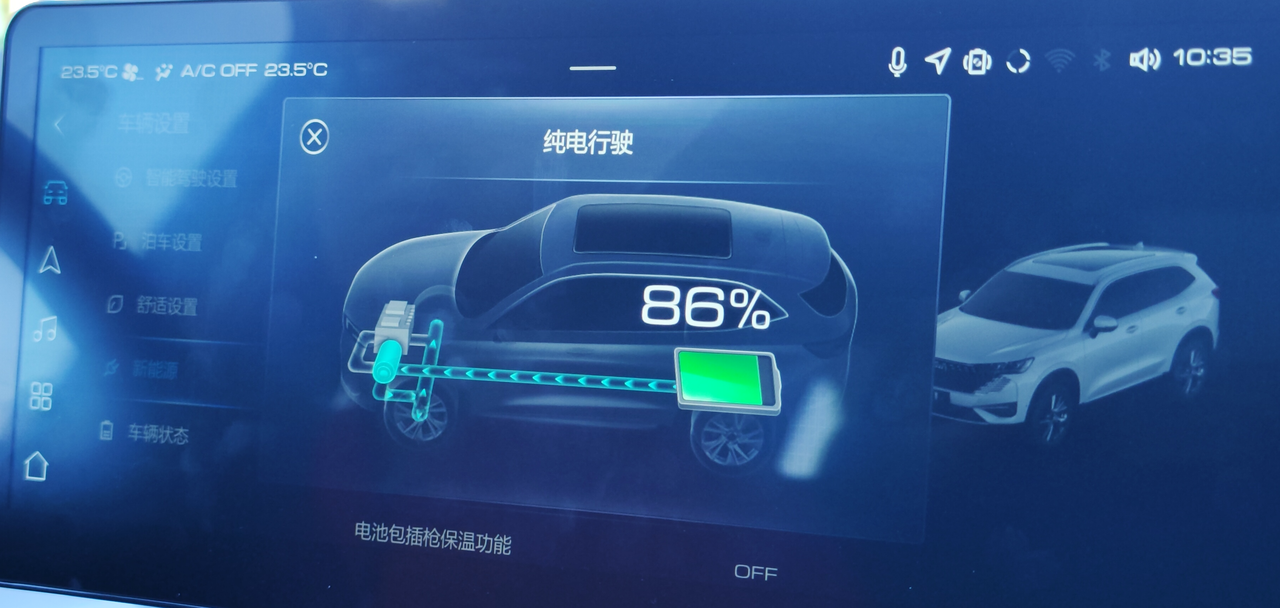
Calculation of Battery Life
After driving for 50 minutes, we arrived at the rest area for a short break. At this point, the battery level was still at 44%, and the fuel consumption due to several hard accelerations decreased by 4 kilometers, resulting in a decrease in the range to 411 kilometers.

After resuming the journey, in the second half of the highway, I tried to use the driving assistance system of the Haval H6. There is a special lever for the driving assistance system below the left side of the steering wheel, which can easily activate the lane centering and adaptive cruise control.

As the battery was about to run out, we left the highway and started to climb the mountain. It’s so unfortunate that the entire car is so bad, draining the battery on the highway and relying on fuel consumption to climb up the hill.
 During the trip, we encountered three different road conditions: congested loops, highways, and mountain roads. The Haval H6 PHEV demonstrated excellent power and smoothness, with the motor and 1.5T engine working together seamlessly – there was barely any vibration or noticeable gear shifting. In the challenging uphill and hairpin turn sections of the mountain roads, the H6 was precise, well-supported, and easy to handle.
During the trip, we encountered three different road conditions: congested loops, highways, and mountain roads. The Haval H6 PHEV demonstrated excellent power and smoothness, with the motor and 1.5T engine working together seamlessly – there was barely any vibration or noticeable gear shifting. In the challenging uphill and hairpin turn sections of the mountain roads, the H6 was precise, well-supported, and easy to handle.

Throughout the entire journey, the vehicle’s NVH sound insulation was very good, effectively isolating road, tire, and wind noise. However, this resulted in another problem – the engine and electric motor sounds were amplified. Yes, this car is quiet, but the sounds of the engine and electric motor are quite clear. So, it’s better to play some music while driving.
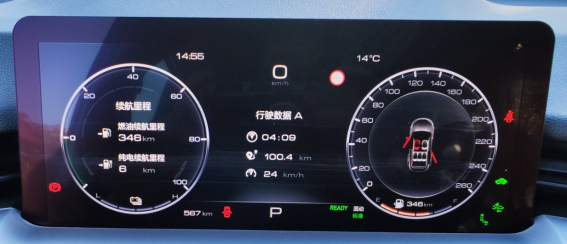
Unfortunately, even when we drove continuously in pure electric mode, we couldn’t see the true performance of the electric-to-gasoline ratio. After driving 100 kilometers, the pure electric range was extended by 6km due to downhill energy recovery, while the fuel range dropped to 346km.
However, this was just at the beginning of the downhill section, and the range was dynamically calculated with high energy consumption. After driving for some time on the highway, when the total mileage reached 140 kilometers, the fuel range increased to 384km.
415-384+102-7=126,which is a 10% discount on 140. This vehicle showed a reverse discount.### Translation

I don’t know if there’s a small bug in the data displayed in the car’s infotainment system. All I can tell you is that the final display in the infotainment system is 2.7 liters per 100 kilometers… It seems that a more accurate actual-range to rated-range ratio will have to wait until I have the chance to actually run the car until the gas tank is fully drained and then test it.

Comprehensive Test Drive Experience
Compared to the surprise that the Lemon Hybrid DHT brought me, the interior and exterior of the Haval H6 is rather average. After all, as Haval’s first new energy vehicle, it not only needs to innovate and keep up with fashion, but also needs to work hard not to make mistakes.

The front of the car uses a flat HAVAL brand logo and blue DHT and PHEV signs to highlight its new energy identity. The interior uses a 10.25-inch instrument panel with a 12.3-inch central touch screen. It can also be equipped with a 9-inch HUD, but this configuration was not available in the test drive vehicle.
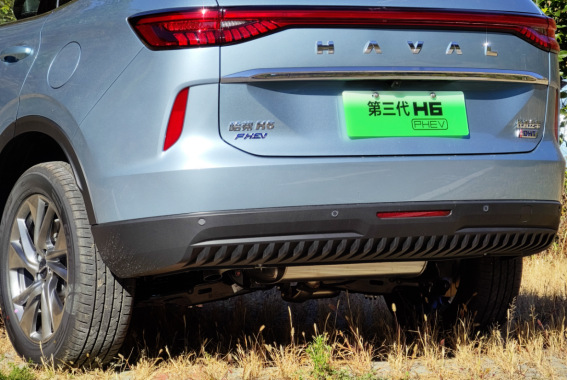 The car infotainment system runs quite smoothly, but it seems that some options have relatively small touchable areas when clicked, causing unresponsive situations. The least acceptable aspect is the card-style interface, which is as complicated and cumbersome to adjust as the widgets in early Android years.
The car infotainment system runs quite smoothly, but it seems that some options have relatively small touchable areas when clicked, causing unresponsive situations. The least acceptable aspect is the card-style interface, which is as complicated and cumbersome to adjust as the widgets in early Android years.

The good news is that all kinds of apps installed in the system are plentiful, including Gaode Map, Tencent Ai Qu Ting, and iQiyi. What’s more, this car also supports Apple CarPlay, which makes up for these small flaws in the car. I believe many people think CarPlay is more than enough.

As for space and comfort, we unanimously agree that a car that can make people fall asleep in the back seat is a good car. To be honest, I fell asleep steadily in the back seat on the return journey.
As the first vehicle of Haval’s new energy strategy, the third-generation H6 DHT-PHEV is bound to have high expectations. After a test drive, I think it is really a powerful car, with ample power in various driving scenarios, easy to handle and fuel-efficient, and provides certain intelligent assisted driving capabilities.

So what is the cost of these improvements?I think it’s about the price. The plug-in hybrid version is much more expensive than the fuel version. The starting price of the fuel version of Haval H6 is around 120,000 yuan, and the top-end Supreme+ 2.0T four-wheel drive model is only 157,000 yuan. On the other hand, the starting price of the Haval H6 PHEV 55km Yueling Edition is 159,800 yuan, and the top-end 110km Changxing Edition costs 173,800 yuan.
At this price point of around 100,000 yuan, it remains to be seen how many users are willing to spend 20% more to buy the plug-in hybrid version. However, from my personal perspective, besides fuel economy, the other important significance of hybrid is the huge improvement in driving experience brought by electric drive. As for how the extra tens of thousands of yuan can generate positive income on the economic account, it depends on how far you drive it.
At the same time, I think Haval also hopes that it can run further in the hands of users. After all, the H6 DHT-PHEV has two core product strengths: driving comfort and fuel saving. The former has an immediate effect, while the latter needs more mileage to prove it.
And perhaps this will also be the key to Haval H6 retaining the sales crown for 100 consecutive months.
This article is a translation by ChatGPT of a Chinese report from 42HOW. If you have any questions about it, please email bd@42how.com.
